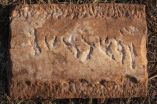(Press-News.org) Scientists with the University of Arizona-led asteroid sample return mission OSIRIS-REx have measured the orbit of their destination asteroid, 1999 RQ36, with such accuracy they were able to directly determine the drift resulting from a subtle but important force called the Yarkovsky effect – the slight push created when the asteroid absorbs sunlight and re-emits that energy as heat.
The new orbit for the half-kilometer (one-third mile) diameter 1999 RQ36 is the most precise asteroid orbit ever obtained, OSIRIS-REx team member Steven Chesley of the NASA Jet Propulsion Laboratory said. He presented the findings May 19 at the Asteroids, Comets and Meteors 2012 meeting in Niigata, Japan.
Remarkable observations that Michael Nolan at Arecibo Observatory in Puerto Rico made in September, along with Arecibo and Goldstone radar observations made in 1999 and 2005, when 1999 RQ36 passed much closer to Earth, show that the asteroid has deviated from its gravity-ruled orbit by roughly 100 miles, or 160 kilometers, in the last 12 years, a deviation caused by the Yarkovsky effect.
The Yarkovsky effect is named for the 19th-century Russian engineer who first proposed the idea that a small rocky space object would, over long periods of time, be noticeably nudged in its orbit by the slight push created when it absorbs sunlight and then re-emits that energy as heat.
The effect is difficult to measure because it's so infinitesimally small, Chesley said.
"The Yarkovsky force on 1999 RQ36 at its peak, when the asteroid is nearest the sun, is only about a half-ounce – about the weight of three grapes on Earth. Meanwhile, the mass of the asteroid is estimated to be about 68 million tons. You need extremely precise measurements over a fairly long time span to see something so slight acting on something so huge."
Nolan, who obtained his doctorate at the UA, succeeded in a heroic effort to get a 16-ton power supply for the transmitter from Pennsylvania to Puerto Rico in six days in time for the observations, which he made on three separate nights last September. Nolan and his team measured the distance between the Arecibo Observatory and 1999 RQ36 to an accuracy of 300 meters, or about one-fifth of a mile, when the asteroid was 30 million kilometers, or 20 million miles, from Earth.
"That's like measuring the distance between New York City and Los Angeles to an accuracy of 2 inches, and fine enough that we have to take the size of the asteroid and of Arecibo Observatory into account when making the measurements," Nolan said.
Chesley and his colleagues used the new Arecibo measurements to calculate a series of 1999 RQ36 approaches closer to Earth than 7.5 million kilometers (4.6 million miles) from the years 1654 to 2135. There turned out to be 11 such encounters.
In 2135, the 500-meter (1,640-foot) diameter asteroid will swing by Earth at around 350,000 kilometers (220,000 miles), its closest approach over the 481-year time span. That's closer than the moon, which orbits about 390,000 kilometers (240,000 miles) from Earth. At such close distances, the asteroid's subsequent trajectory becomes impossible to accurately predict so close approaches can only be studied statistically, Chesley said.
"The new results don't really change what is qualitatively known about the probability of future impacts," Chesley said. "The odds of this potentially hazardous asteroid colliding with Earth late in the 22nd century are still calculated to be about one in a few thousand."
But the new results do sharpen the picture of how potentially hazardous 1999 RQ36 could be farther into the future. Scientists now have identified many low-probability potential impacts in the 2170s through the 2190s while ruling out others, Chesley said.
"OSIRIS-REx science team members Steve Chesley and Mike Nolan have achieved a spectacular result with this investigation," said Dante Lauretta, the mission's principal investigator and professor of planetary science at the UA. "This study is an important step in better understanding the Yarkovsky effect – a subtle force that contributes to the orbital evolution of new near-Earth objects."
Lauretta added that "this information is critical for assessing the likelihood of an impact from our target asteroid and provides important constraints on its mass and density, allowing us to substantially improve our mission design."
The final piece to the puzzle was provided by the University of Tennessee's Josh Emery, who used NASA's Spitzer Space Telescope in 2007 to study the space rock's thermal characteristics. Emery's measurements of the infrared emissions from 1999 RQ36 allowed him to derive the object's temperatures.
From there he was able to determine the degree to which the asteroid is covered by an insulating blanket of fine material, which is a key factor for the Yarkovsky effect.
With the space rock's orbit, size, thermal properties and propulsive force (Yarkovsky effect) understood, Chesley could perform the space rock scientist equivalent of solving for "x" and calculate its bulk density.
"1999 RQ36 has about the same density as water, and so it's very light for its size," said Chesley. "This means that it's more than likely a very porous jumble of rocks and dust."
Asteroid 1999 RQ36 is of particular interest to NASA as it is the target of the agency's OSIRIS-REx (Origins, Spectral Interpretation, Resource Identification, Security, Regolith Explorer) mission. Scheduled for launch in 2016, ORIRIS-Rex will visit 1999 RQ36, collect samples from the asteroid and return them to Earth.
NASA detects, tracks and characterizes asteroids and comets passing close to Earth using both ground and space-based telescopes. The Near-Earth Object Observations Program, commonly called Spaceguard, discovers these objects, characterizes a subset of them, and establishes their orbits to determine if any could be potentially hazardous to our planet.
Finding the bulk density of a solitary space object by combining radar tracking and infrared observations might once have seemed almost science fiction, Chesley said.
What OSIRIS-REx scientists are beginning to learn about Yarkovsky drift strengthens the idea that "the Yarkovsky effect can be used to probe the physical properties of asteroids that we can't visit with spacecraft," he said.
INFORMATION:
OSIRIS-REx scientists measure Yarkovsky effect
Scientists with the UA-led asteroid sample return mission, OSIRIS-REx, have measured the mass and orbit of their destination asteroid, 1999 RQ36, with great accuracy
2012-05-28
ELSE PRESS RELEASES FROM THIS DATE:
Cedars-Sinai physician definitively links irritable bowel syndrome and bacteria in gut
2012-05-28
LOS ANGELES (May 25, 2012) – An overgrowth of bacteria in the gut has been definitively linked to Irritable Bowel Syndrome in the results of a new Cedars-Sinai study which used cultures from the small intestine. This is the first study to use this "gold standard" method of connecting bacteria to the cause of the disease that affects an estimated 30 million people in the United States.
Previous studies have indicated that bacteria play a role in the disease, including breath tests detecting methane – a byproduct of bacterial fermentation in the gut. This study was the ...
From stem cell to brain cell – new technique mimics the brain
2012-05-28
A new technique that converts stem cells into brain cells has been developed by researchers at Lund University. The method is simpler, quicker and safer than previous research has shown and opens the doors to a shorter route to clinical cell transplants.
By adding two different molecules, the researchers have discovered a surprisingly simple way of starting the stem cells' journey to become finished brain cells. The process mimics the brain's natural development by releasing signals that are part of the normal development process. Experiments in animal models have shown ...
Like curry? New biological role identified for compound used in ancient medicine
2012-05-28
CORVALLIS, Ore. – Scientists have just identified a new reason why some curry dishes, made with spices humans have used for thousands of years, might be good for you.
New research at Oregon State University has discovered that curcumin, a compound found in the cooking spice turmeric, can cause a modest but measurable increase in levels of a protein that's known to be important in the "innate" immune system, helping to prevent infection in humans and other animals.
This cathelicidin antimicrobial peptide, or CAMP, is part of what helps our immune system fight off various ...
Phone contact with nurses linked with better outcomes for women with gestational diabetes
2012-05-28
OAKLAND, Calif., May 25, 2012 – Among women with gestational diabetes mellitus, referral to a telephone-based nurse management program was associated with lower risk of high baby birth weight and increased postpartum glucose testing, according to Kaiser Permanente researchers.
Investigators for the Kaiser Permanente Northern California Division of Research examined the associations between referral to telephone-based nurse consultation and outcomes in 12 Kaiser Permanente medical centers with variation in the percent of patients referred to telephonic nurse management. ...
A new invading sea crab reaches the Ebro Delta
2012-05-28
Originally endemic to the Atlantic Coast of North America, over the past 30 years Dyspanopeus sayi has been involuntarily introduced in the UK, France, the Netherlands, the Black Sea and the Adriatic Sea. A study shows that in recent years the sea crab has established itself along the Western Mediterranean Coast.
A team of Spanish and German researchers have recorded the first American Dyspanopeus sayi sea crab in the bay of Els Alfacs in the Ebro Delta (Spain). Both sexes were captured along with many ovigerous females (carrying eggs) in different areas and different ...
First study to suggest that the immune system may protect against Alzheimer's changes in humans
2012-05-28
Recent work in mice suggested that the immune system is involved in removing beta-amyloid, the main Alzheimer's-causing substance in the brain. Researchers have now shown for the first time that this may apply in humans.
Researchers at the Peninsula College of Medicine and Dentistry, University of Exeter with colleagues in the National Institute on Aging in the USA and in Italy screened the expression levels of thousands of genes in blood samples from nearly 700 people. The telltale marker of immune system activity against beta-amyloid, a gene called CCR2, emerged as ...
Autopsy of an eruption: Linking crystal growth to volcano seismicity
2012-05-28
How processes below a volcano are linked to seismic signals at the surface is described by scientists from the petrology group of the Ruhr-Universität Bochum and their colleagues from Bristol in a paper published today in Science. They analyzed the growth of crystals in the magma chamber and used results obtained from the monitoring of seismic signals. The research could ultimately help to predict future volcanic eruptions with greater accuracy.
Like tree rings: Crystals in a magma chamber
A few kilometers below the volcano a liquid reservoir exists, the magma chamber, ...
Picture release: More than meets the eye
2012-05-28
VIDEO:
Depicting each copy of COPI as a triangle, the different arrangements of these building blocks become easier to spot.
Click here for more information.
These spheres may look almost identical, but subtle differences between them revealed a molecular version of the robots from Transformers. Each sphere is a vesicle, a pod that cells use to transport materials between different compartments. The images, produced by Marco Faini from John Briggs' lab at the European Molecular ...
Oldest Jewish archaeological evidence on the Iberian Peninsula
2012-05-28
On a marble plate, measuring 40 by 60 centimetres, the name "Yehiel" can be read, followed by further letters which have not yet been deciphered. The Jena Archaeologists believe that the new discovery might be a tomb slab. Antlers, which were found very close to the tomb slab in the rubble gave a clue to the age determination. "The organic material of the antlers could be dated by radiocarbon analysis with certainty to about 390 AD," excavation leader Dr. Dennis Graen of the Jena University explains. "Therefore we have a so-called 'terminus ante quem' for the inscription, ...
70 percent of women use contraceptives during their first sexual encounter
2012-05-28
VIDEO:
Contraceptive use in Spain during the first sexual encounter is similar to other European countries. However, there are some geographical differences between Spanish regions: women in Murcia use contraceptives less...
Click here for more information.
Contraceptive use in Spain during the first sexual encounter is similar to other European countries. However, there are some geographical differences between Spanish regions: women in Murcia use contraceptives less (55.8%) ...
LAST 30 PRESS RELEASES:
Making lighter work of calculating fluid and heat flow
Normalizing blood sugar can halve heart attack risk
Lowering blood sugar cuts heart attack risk in people with prediabetes
Study links genetic variants to risk of blinding eye disease in premature infants
Non-opioid ‘pain sponge’ therapy halts cartilage degeneration and relieves chronic pain
AI can pick up cultural values by mimicking how kids learn
China’s ecological redlines offer fast track to 30 x 30 global conservation goal
Invisible indoor threats: emerging household contaminants and their growing risks to human health
Adding antibody treatment to chemo boosts outcomes for children with rare cancer
Germline pathogenic variants among women without a history of breast cancer
Tanning beds triple melanoma risk, potentially causing broad DNA damage
Unique bond identified as key to viral infection speed
Indoor tanning makes youthful skin much older on a genetic level
Mouse model sheds new light on the causes and potential solutions to human GI problems linked to muscular dystrophy
The Journal of Nuclear Medicine ahead-of-print tip sheet: December 12, 2025
Smarter tools for peering into the microscopic world
Applications open for funding to conduct research in the Kinsey Institute archives
Global measure underestimates the severity of food insecurity
Child survivors of critical illness are missing out on timely follow up care
Risk-based vs annual breast cancer screening / the WISDOM randomized clinical trial
University of Toronto launches Electric Vehicle Innovation Ontario to accelerate advanced EV technologies and build Canada’s innovation advantage
Early relapse predicts poor outcomes in aggressive blood cancer
American College of Lifestyle Medicine applauds two CMS models aligned with lifestyle medicine practice and reimbursement
Clinical trial finds cannabis use not a barrier to quitting nicotine vaping
Supplemental nutrition assistance program policies and food insecurity
Switching immune cells to “night mode” could limit damage after a heart attack, study suggests
URI-based Global RIghts Project report spotlights continued troubling trends in worldwide inhumane treatment
Neutrophils are less aggressive at night, explaining why nighttime heart attacks cause less damage than daytime events
Menopausal hormone therapy may not pose breast cancer risk for women with BRCA mutations
Mobile health tool may improve quality of life for adolescent and young adult breast cancer survivors
[Press-News.org] OSIRIS-REx scientists measure Yarkovsky effectScientists with the UA-led asteroid sample return mission, OSIRIS-REx, have measured the mass and orbit of their destination asteroid, 1999 RQ36, with great accuracy




